Are you having trouble keeping your grow tent at the right temperature and humidity for cannabis cultivation? This post covers key strategies for maintaining optimum conditions, including ideal levels for growth and effective climate control techniques. Readers will gain practical steps to resolve common climate issues and achieve better cannabis yields.
Key Takeaways
- Consistent climate control is essential for healthy cannabis plant development
- Real-time monitoring supports stable temperature and humidity levels
- Automated sensor calibration simplifies managing environmental conditions
- Accurate data tracking fosters improved bud formation and leaf growth
- Control adjustments during each growth phase ensure optimal cannabis yield
Understand the Role of Temperature and Humidity in Cannabis Cultivation
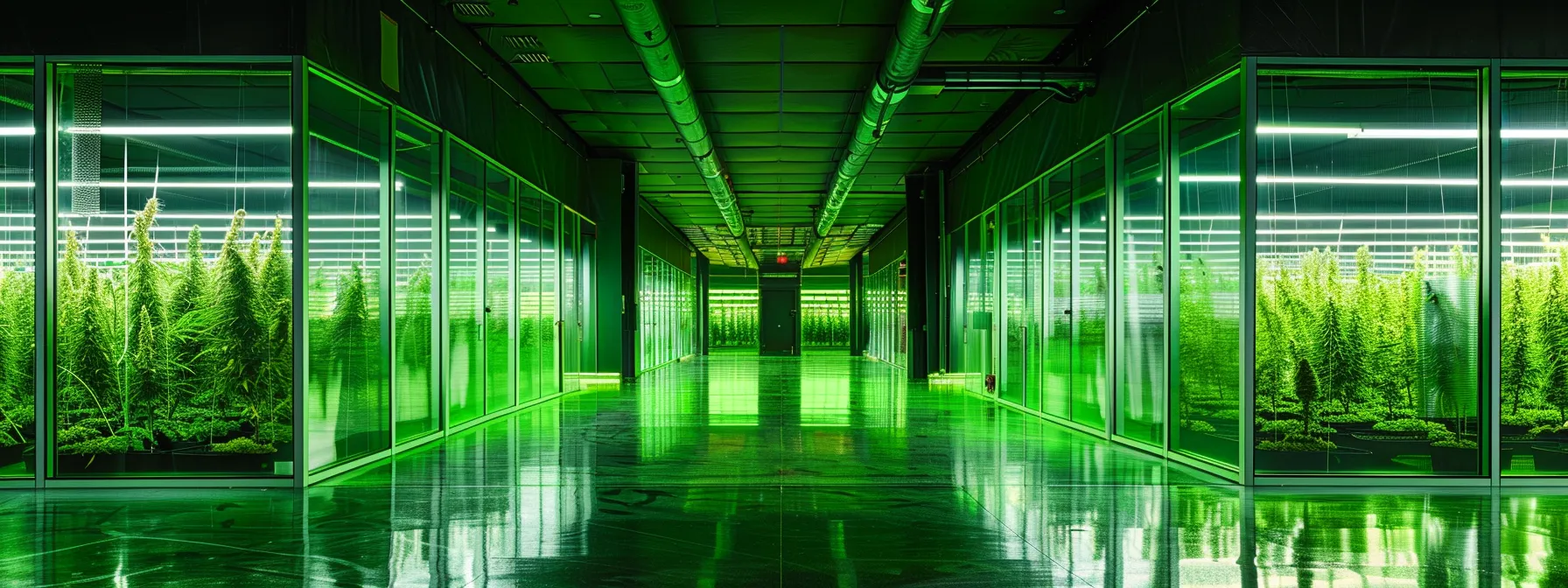
The proper balance of temperature and humidity influences the speed at which cannabis plants mature and thrive in a controlled environment.
Understanding these elements allows cultivators to monitor conditions accurately and adjust settings using a clock-based system:
- Temperature levels in fahrenheit
- Humidity percentages
- Soil moisture content
Maintaining a stable environment is key to promoting consistent growth and quality, as fluctuations can affect the soil condition and overall plant development.
Measuring temperature in fahrenheit and keeping track of changes with a clock ensures that the speed of growth is optimal for producing healthy cannabis plants.
Determine Ideal Temperature and Humidity Levels for Cannabis Growth
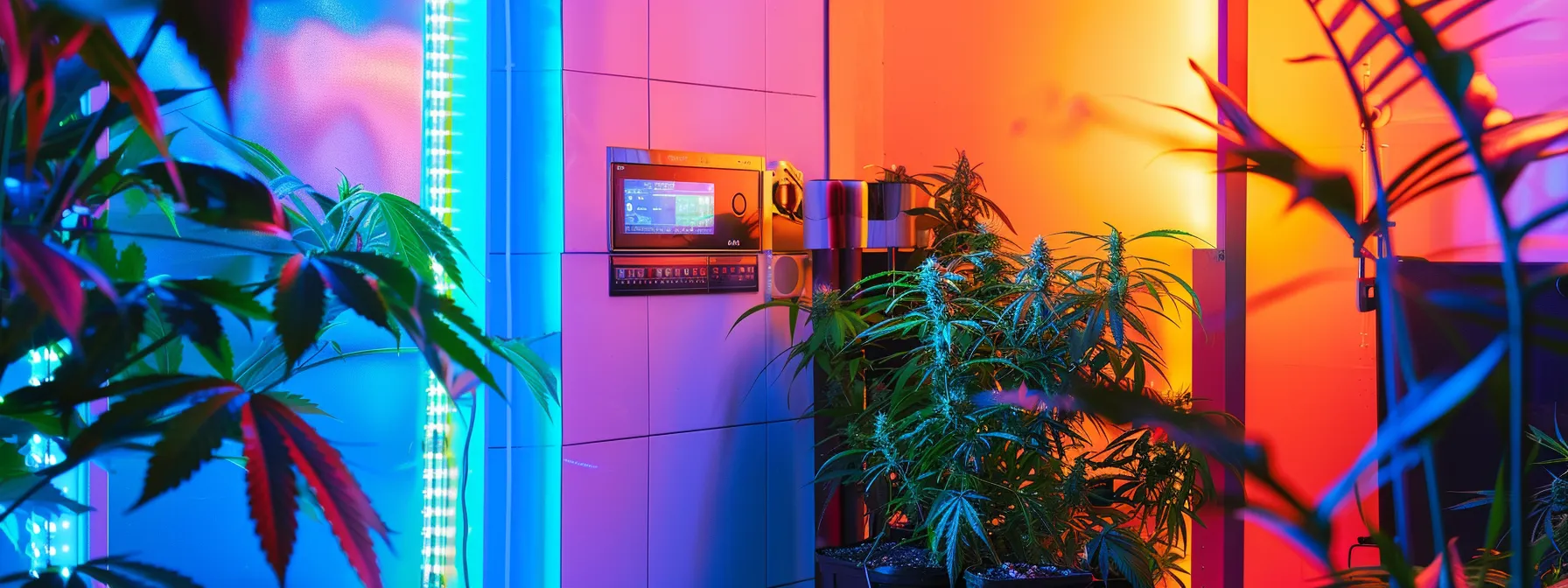
Optimal conditions for seedling development and the best environment for the vegetative phase are crucial. This section covers room temperature settings, proper thermostat use, and ventilation for flowering stages, including spray management and heat control during late flowering conditions. Each topic supports practical insights for successful cannabis cultivation.
Optimal Conditions for Seedling Development
The cultivation guide advises that seedling development thrives best when the environment is maintained with precise measurement of temperature and humidity. Consistent environmental data, gathered from an android monitoring device, helps adjust the account of readings to ensure that every seedling receives optimal conditions to stimulate photosynthesis.
The strategy involves careful observation and control using secure settings similar to using an account with a defined password:
- Temperature calibration in controlled scales
- Humidity monitoring with accurate sensors
- Adjustment procedures for consistent photosynthesis
Strong emphasis on a stable atmosphere enables cultivators to intervene timely and promote vigorous seedling growth.
Best Environment for Vegetative Phase
The environment during the vegetative phase must combine optimal temperature and humidity, ensuring that air conditioners maintain even cooling while a light meter provides precise light measurements. This setting acts as a valuable investment for plant propagation efforts, aligning with best practices found in leading regions such as germany.
Maintaining constant conditions supports strong stem growth and robust leaf development, key factors for successful cultivation. Cultivators use air conditioners and light meter readings to achieve a stable climate, ensuring their investment in plant propagation yields dependable results, as observed in experiments and practices in germany.
Suitable Climate for Flowering Stage
The flowering stage requires a carefully maintained environment where temperature and humidity are monitored using reliable systems. Cultivators often adjust their settings similar to operations in a warehouse to ensure that humidity levels balance with carbon exchange, creating a stable and productive phase.
Successful cannabis growth during flowering benefits from precise climate control that mirrors natural garden conditions. Operators sometimes introduce measures that cool settings as effectively as ice, resulting in improved bud formation and enhanced product quality.
Late Flowering Stage Conditions
During the late flowering stage, cultivators adjust environmental settings to secure a successful harvest. They incorporate a data logger to track temperature and humidity precisely within the cultivation space, aiding in fine-tuning conditions and supporting results seen in established networks.
Operators use real-time data to maintain steady conditions and avoid fluctuations that can impact bud quality. They also subscribe to a newsletter that provides ongoing insights and affirm reliable network practices, ensuring that every phase of growth achieves its potential.
Implement Effective Climate Control Techniques in Grow Tents
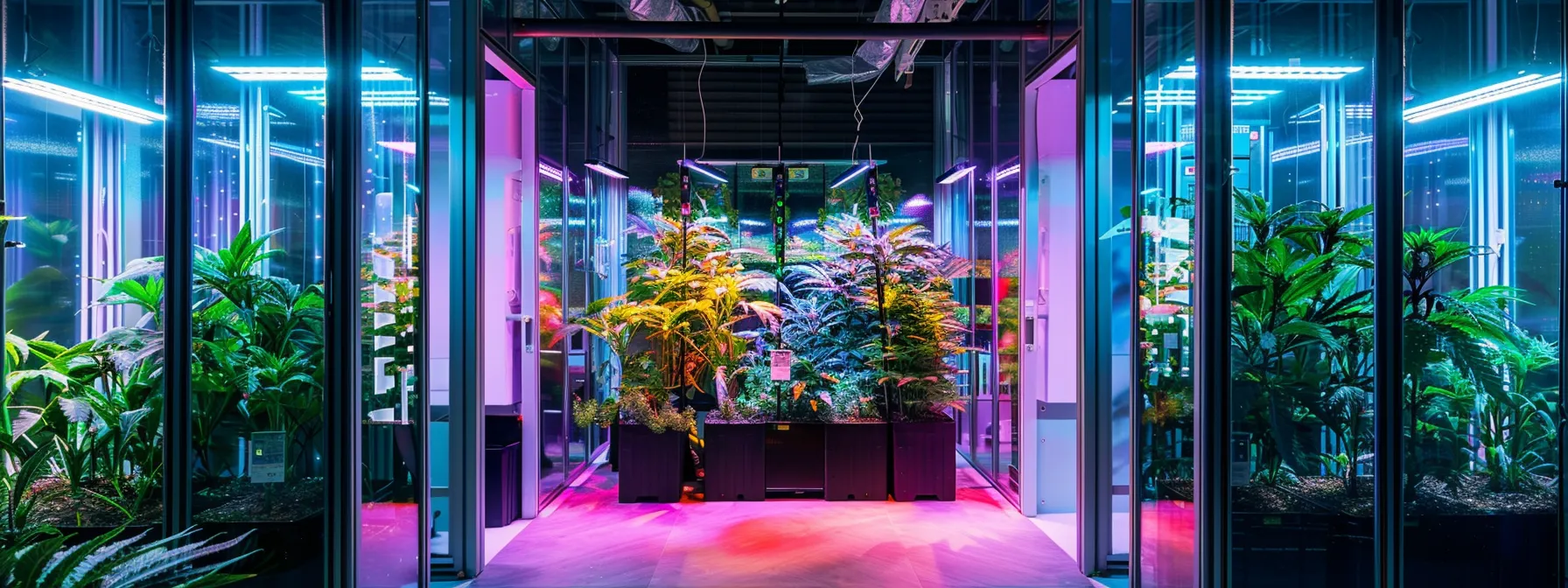
Effective climate management in grow tents relies on thermostats and humidity controllers, proper ventilation for air circulation, and a blend of dehumidifier and humidifier systems. Insulating tent structures enhances temperature stability while adhering to good manufacturing practice. This guide offers practical insights for customers, ensuring optimal canopy conditions and balanced ph levels for thriving cannabis growth.
Using Thermostats and Humidity Controllers
Using proper thermostats and humidity controllers in grow tents helps maintain an ideal environment that minimizes the risk of root rot and pest infestations. Effective controls work in tandem with air conditioning systems to stabilize temperatures, an approach that serves both soil and hydroponics setups with precision.
Farmers often integrate SMS alerts into their monitoring systems to detect changes early and respond swiftly, preventing issues before they escalate. This method supports real-time adjustments that maintain optimal conditions for growth, ensuring that every plant benefits from a balanced climate and reduced likelihood of pests or mold.
Utilizing Ventilation Systems for Air Circulation
Operators integrate advanced ventilation systems to achieve precise temperature control within grow tents, ensuring consistent airflow that supports optimal terpene development. Utilizing technology that syncs with ios-based monitoring apps, they rapidly adjust settings to maintain a stable environment for cannabis growth on both coir and soil mediums.
Experts recommend combining reliable ventilation with automated alerts on ios devices to address any fluctuations promptly, thereby safeguarding the balance essential for robust plant development. This method proves effective in managing indoor climates, promoting quality production while easing cultivators' concerns regarding potential disruptions in temperature control and terpene preservation.
Integrating Dehumidifiers and Humidifiers
The integration of dehumidifiers and humidifiers in grow tents ensures stable conditions critical for optimizing yield, using systems that require precise voltage control to operate efficiently. This approach helps maintain proper moisture levels, preventing excess water that could hamper leaf development and degrade resin quality while reducing the risk of mildew formation.
Experts recommend combining these devices with reliable climate monitoring to maintain an ideal pint-to-pint balance of humidity. Strategic use of dehumidifiers and humidifiers supports healthy plant growth and protects valuable resin, addressing common issues related to mildew and other moisture-induced challenges in cannabis cultivation.
Insulating Grow Tents for Temperature Stability
Insulating grow tents helps maintain a controlled environment that prevents unwanted evaporation and condensation while ensuring temperature accuracy. Integrating a temperature data logger and monitoring voltage levels provides precise information for adjustments, so every unit you "add to cart" guarantees optimal conditions for plant growth.
Stable insulation minimizes external influences and protects against voltage fluctuations that may induce condensation, thereby preserving system efficiency. By monitoring detailed readings from a temperature data logger, cultivators obtain reliable insights that simplify climate control decisions for enhanced cultivation results.
Monitor Temperature and Humidity Levels Consistently
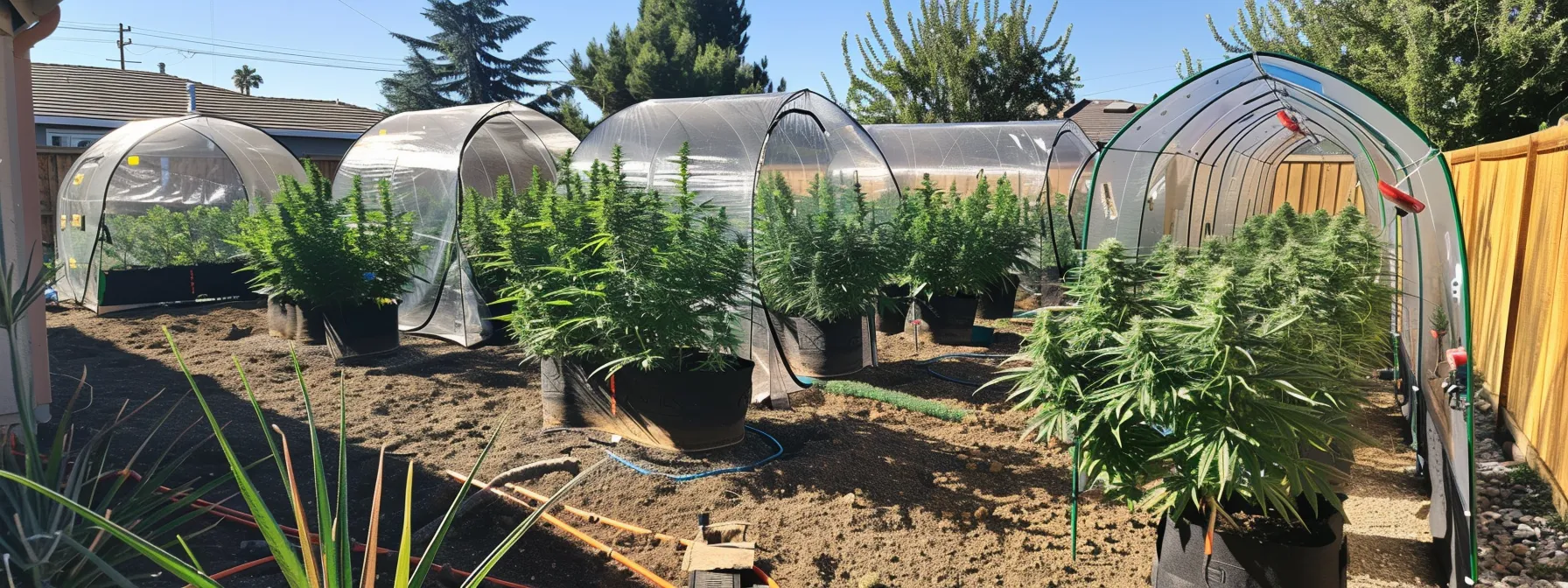
The guide emphasizes selecting quality temperature sensors and soil moisture sensors to measure key parameters reliably. It covers setting automated alerts for climate deviations, performing regular calibration of sensors, and keeping logs of temperature and humidity changes to manage odor control effectively. These insights aid cannabis cultivators in maintaining a stable environment.
Choosing the Right Sensors for Cannabis Cultivation
Reliable sensor selection minimizes stress on crops by ensuring that temperature and humidity levels are accurately monitored, enabling precise management of cultivation conditions. Expertise in sensor technology and automation guides cultivators to choose devices that maintain ideal growing environments while reducing manual adjustments. This practical approach supports steady crop development and improves overall system efficiency.
Advanced sensor tools offer insights that streamline cultivation management and ease stress on plant systems. The use of automation coupled with precise sensor data allows for real-time adjustments, ensuring that crops thrive under optimal conditions. Leading practices in sensor deployment equip growers with the actionable data required to sustain consistent cultivation outcomes.
Setting Up Automated Alerts for Climate Deviations
Automated alerts assist cultivators in quickly addressing climate shifts, ensuring accurate water delivery and reliable nutrient uptake. Utilizing precise settings allows users to incorporate a daily light integral strategy while handling the environment as carefully as one would manage a spray bottle during routine maintenance.
Advanced systems continuously monitor temperature and humidity, sending notifications when readings stray from optimal ranges, much like a well-calibrated bottle ensures the correct balance of chemical applications. This approach provides real-time adjustments that protect sensitive cannabis growth and sustains the ideal use of water and nutrient solutions throughout the cultivation process.
Regular Calibration of Monitoring Equipment
Regular calibration of monitoring equipment ensures that a cultivator can track dew formation and other critical environmental factors accurately. This proactive approach streamlines the supply chain for data and provides actionable insights to help growers maintain optimal conditions for plant health.
Frequent calibration supports a cultivator's efforts by minimizing sensor drift and recording precise temperature and humidity values. This practice offers a reliable method to monitor environmental factors, enabling growers to make informed adjustments that improve their overall grow operations.
Keeping Logs of Temperature and Humidity Changes
Maintaining detailed logs of temperature and humidity changes is a cornerstone of good laboratory practice and promotes reduced downtime in cannabis cultivation operations. Effective storage of monitoring data contributes to energy efficiency and can impact the sale price positively by ensuring optimal conditions are met during every stage of growth:
- Good laboratory practice adherence
- Accurate data storage
- Energy conservation through proactive management
- Sale price optimization via consistent quality
- Minimized downtime through prompt intervention
Comprehensive record keeping allows cultivators to identify trends and make informed adjustments that enhance overall system performance, reflecting real-world success in operational management. This approach provides actionable insights that support reliable crop outcomes and economic benefits in the legal cannabis market.
Adjusting Conditions for Different Growth Stages
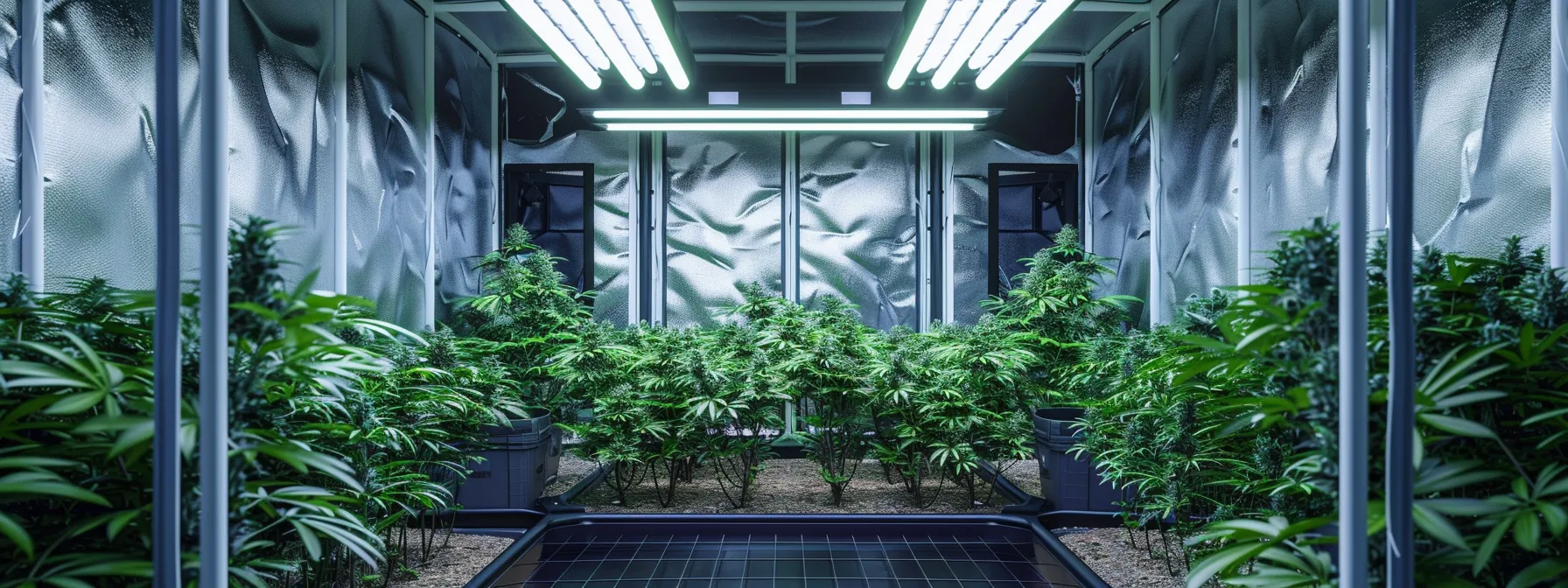
This section outlines how to fine-tune the environment through every growth phase while responding to external temperature and humidity fluctuations. It highlights methods for managing disease risks, optimizing transpiration for plant health, and enhancing grow tent climate control. The content also contrasts indoor and outdoor strategies, offering clear insights for effective cultivation under varying conditions.
Fine-Tuning Environment for Each Growth Phase
During each stage of cannabis cultivation, adjustments are made to keep the internal climate stable and boost productivity. Cultivators use a humidifier along with monitoring carbon dioxide levels to ensure that every phase supports optimal plant development, a practice often recommended by the best marijuana guide.
Experts suggest fine-tuning environmental variables such as temperature and moisture to fit the specific needs of seedlings, the vegetative state, and the flowering period. By making targeted changes that include the use of a humidifier and controlling carbon dioxide, operators can achieve consistent plant development and improved productivity throughout the growth cycle.
Responding to External Temperature and Humidity Fluctuations
Operators respond swiftly to external temperature and humidity fluctuations by monitoring hygrometer readings inside the greenhouse, ensuring that the pulse of environmental changes does not adversely affect cannabinoid stability. They adjust ventilation methods to control smoke dispersion and maintain optimal conditions for consistent plant growth.
Specialists implement a series of practical steps to counteract these fluctuations; the approach includes:
- Regular hygrometer checks to capture real-time pulse data
- Precise adjustments of ventilation systems in the greenhouse
- Strategies to stabilize cannabinoids and moderate smoke effects
- Response protocols to rapidly adjust climate settings
These measures enable cultivators to maintain high-quality growth through each stage of cultivation.
Adapting Strategies for Indoor Versus Outdoor Growing
The cultivation expert notes that indoor growing requires precise climate control to manage temperature variations and prevent mold, ensuring that each plant grows steadily and produces a high-quality bud. Accurate data from modern sensors offers actionable insights that enable operators to adjust conditions swiftly for optimal outcomes during every growth stage.
Outdoor cultivation demands adaptive strategies as natural elements influence environmental data, requiring a tailored approach to climate control. Professionals monitor these conditions carefully to balance temperature and humidity, minimizing mold and protecting each plant's potential to yield robust bud formation.
Troubleshoot Common Climate Issues in Cannabis Cultivation
This section covers identifying signs of temperature and humidity stress, including observing atmosphere shifts and dew point variations. It addresses high humidity issues to prevent powdery mildew, incorporates solutions using a condenser, tackles low temperature challenges, and supports seasonal adjustments. Cultivators can add the right cart to their tools to ensure optimum conditions throughout cultivation stages.
Identifying Signs of Temperature and Humidity Stress
In cannabis cultivation, operators monitor microclimate variations closely using precise thermometers to avoid stress caused by temperature fluctuations. Observing subtle shifts in radiation levels and performing regular audits of climate data aids in maintaining optimal conditions, addressing common challenges in agriculture head-on.
Experts note that identifying signs of temperature and humidity stress involves careful observation and swift adjustments. They emphasize the importance of using reliable thermometers to detect deviations in microclimate parameters, ensuring that cultivation practices remain aligned with effective agricultural standards.
Solutions for High Humidity Problems
Operators address excessive moisture by incorporating dehumidifiers and airflow systems that reduce the risk of fungus contamination. They update their inventory with reliable devices and adjust their grow light settings for balanced heat, ensuring the shopping cart of equipment meets cultivation needs:
| Equipment | Role |
|---|---|
| Dehumidifier | Reduces moisture levels |
| Grow Light | Maintains heat balance |
| Airflow System | Improves ventilation efficiency |
Professionals monitor environmental data via a dedicated server to ensure real-time adjustments that prevent fungus growth and optimize the cultivation process. They emphasize the importance of proactive updates to the inventory and maintain a readily available shopping cart for essential equipment upgrades, guaranteeing efficient adaptation to high humidity challenges.
Addressing Low Temperature Challenges
Operators address low temperature challenges by maintaining precise calibration of equipment and strict control over environmental settings. They utilize advanced airflow systems and reservoir monitoring to ensure that even vegetable crop integrations receive optimal warmth and avoid root stress.
Specialists recommend routine calibration checks, improved control techniques, and monitoring airflow within the grow space to prevent temperature drops that affect plant health:
- Calibrate sensors weekly to guarantee accurate readings
- Maintain control settings on HVAC systems for steady performance
- Monitor reservoir levels to ensure nutrient delivery during low temperatures
- Optimize airflow to support a stable environment for both cannabis and vegetable growth
Managing Seasonal Changes Effectively
Operators manage seasonal changes by relying on advanced software for environmental monitoring, ensuring that temperature and humidity adjustments run smoothly even during unpredictable weather shifts. This approach includes the integration of pump systems that maintain steady pressure and support effective extraction processes during the cultivation cycle.
Experts monitor the environment using reliable software tools that provide actionable data, enabling them to fine-tune pressure settings and optimize pump operations throughout seasonal fluctuations. Their continuous assessment of environmental monitoring metrics helps maintain a stable climate and ensures that extraction techniques yield high-quality results.
Explore Innovative Technologies for Climate Management
This section outlines smart sensor and IoT solutions for grow tents, automated climate control systems, data analytics for optimizing growing conditions, and future trends in cannabis cultivation technology. It covers practical insights into extract processes using remote monitoring, duct systems in indoor setups, sponge materials for insulation, and tools built with javascript, laying the groundwork for detailed exploration ahead.
Smart Sensors and IoT Solutions for Grow Tents
Modern smart sensors and IoT devices in a tent provide real-time data on key factors such as temperature, humidity, and airflow. This streamlined system helps prevent stunted growth by ensuring every component, from sensor placement to flange calibration, operates at an optimal level, reducing costs where devices are valued at around 300 usd while protecting investments as securely as a damp towel.
Efficient climate management through these digital tools offers actionable insights that assist cultivators in maintaining a stable environment. Presenting the collected data in an organized table can help operators quickly identify trends and make necessary adjustments to avoid issues like stunted growth:
| Parameter | Optimal Range | Device Feature |
|---|---|---|
| Temperature | 70°F - 85°F | Real-time sensor data |
| Humidity | 40% - 60% | Automated alerts |
| Airflow | Proper flange connection | Ventilation system integration |
| Growth Health | N/A | Indicator to avoid stunted growth |
Automated Climate Control Systems
The implementation of automated climate control systems supports precise management of moisture levels and indoor air quality, ensuring that each stage of cannabis cultivation meets exact laboratory standards. These systems deliver a quick view of environmental conditions via wireless sensors, enabling operators to make timely adjustments with actionable insights:
| Feature | Benefit |
|---|---|
| Moisture Monitoring | Ensures optimal water levels |
| Indoor Air Quality | Maintains clean and stable conditions |
| Wireless Integration | Provides real-time data updates |
This technology aids cultivators by reducing the need for manual intervention while delivering accurate measurements akin to laboratory-grade equipment. It offers a streamlined approach to climate management, combining a quick view of key metrics with wireless capabilities that support robust indoor air quality control throughout varied growth stages.
Data Analytics for Optimizing Growing Conditions
Data analytics plays a crucial role in optimizing growing conditions for successful cannabis cultivation. Operators use a sophisticated monitoring system that collects real-time data on temperature and humidity, enabling them to adjust environmental controls with precision. Such systems not only improve crop yield but also offer actionable insights that benefit practices across horticulture sectors in Switzerland, effectively streamlining the transport of critical microclimate data.
Advanced data analytics tools assist cultivators in identifying trends and refining cultivation strategies to prevent environmental imbalances. The integration of a spider network of sensors within the growing area provides detailed insights into climate fluctuations, supporting precise adjustments that minimize stress and maximize plant health. This systematic approach reassures growers that their operations can adapt to the fast-paced needs of modern horticulture, with tools that deliver reliable, actionable data in real time.
Future Trends in Cannabis Cultivation Technology
Innovative climate management in cannabis cultivation is moving in a direction where advanced heating system integration pairs with real-time smartphone sensors to offer growers precise information on environmental conditions. This new technology helps reduce risk during cultivation by ensuring that temperature and humidity levels remain stable, using tools like Best Grow Tents for Cannabis that allow for dynamic control adjustments.
Emerging trends also include automated systems that use data from smartphones to fine-tune settings in a way that meets the demands of high-performance growing. Experts believe these tools offer a practical solution for maintaining reliable environmental control, thereby reducing risk and providing the information needed for success in cannabis cultivation.
Frequently Asked Questions
What temperature is best for steady cannabis growth?
Cannabis thrives best in controlled conditions at approximately 75°F to 80°F during daylight hours, with a few degrees lower at night for balanced growth and healthy terpenes.
How does humidity affect cannabis yield?
Humidity influences both yield and quality. Excess moisture may foster mold, while inadequate levels stress cannabis, reducing growth and potency. Maintaining balanced humidity is crucial for producing robust, high-quality cannabis in regulated markets.
Which tools monitor climate in grow tents effectively?
High-quality digital thermometers, hygrometers, and climate control sensors offer precise readings, ensuring ideal temperature and humidity levels in grow tents for optimal cannabis cultivation.
What adjustments suit different cannabis growth stages?
Proper adjustments involve tailoring nutrient formulas, lighting, temperature, and humidity according to the cannabis plant's stage of development, ensuring optimal growth, resin production, and overall plant health.
How do innovative technologies improve climate management?
Innovative technologies drive precise climate monitoring, advanced data analytics, and sustainable resource management by employing sophisticated sensors and predictive models, refining carbon management and environmental strategies for improved outcomes.
Conclusion
Effective temperature and humidity strategies are central to optimizing cannabis cultivation in controlled environments. Smart monitoring and precise adjustments enable cultivators to maintain stability throughout all growth stages. Reliable sensor data and automated climate systems empower operators to achieve consistent plant quality and yield. This focus on environmental mastery ultimately positions growers for success in the competitive cannabis market.


